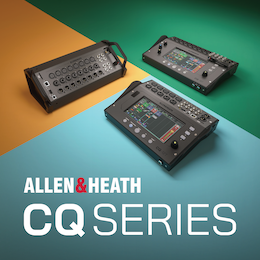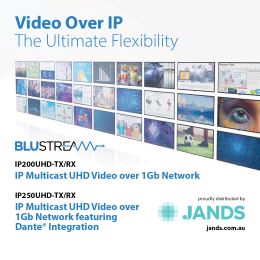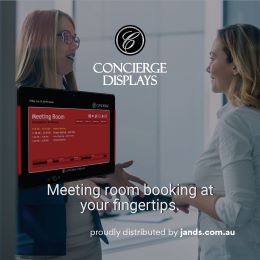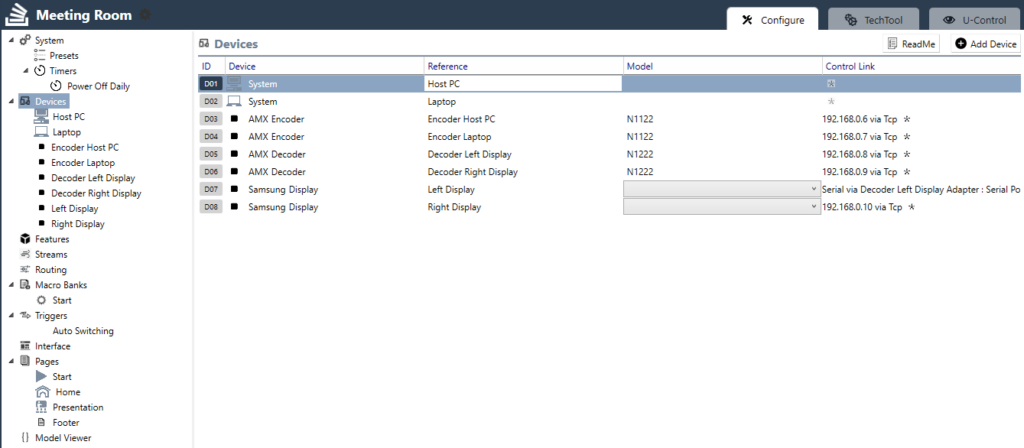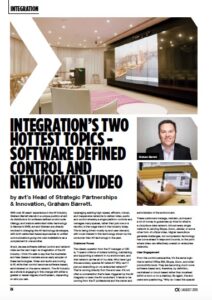Subscribe to CX E-News
Integration
Integration’s Two Hottest Topics – Software Defined Control and Networked Video
 by avt’s Head of Strategic Partnerships & Innovation, Graham Barrett.
by avt’s Head of Strategic Partnerships & Innovation, Graham Barrett.
With over 30 years’ experience in the AV industry, Graham Barrett stands in a unique position at avt. As distributors for software defined control suite Utelogy, and mature networked video technology in Harman’s SVSI, avt and Graham are directly involved in changing the AV technology landscape, with both networked-based approaches to unified communications going into new installations as a complement to one another.
At avt, we see software defined control and network video as the next major re-imagination of the AV industry. I think it’s safe to say that the Australian and New Zealand markets are an early adopter of these technologies. Video and audio are moving to IP, while their control becomes software-based, administered on the same network. The AV industry as a whole is engaging in this change with either a greater or lesser degree of enthusiasm, depending on who you ask.
Leveraging existing high-speed, efficient, robust, and inexpensive networks to deliver video, audio and control whereby a single platform controls and manages many spaces, rather than just one or a handful, is the mega-trend in the industry today. This is being driven mostly by end-user demand, with more interest in this technology shown by the consumer than AV technology in the past.
Customer Focus
The classic question from the IT manager or CIO is “I spend millions of dollars building, maintaining and supporting a network in my environment, and that network carries all of my data. Why have I got this secondary, special AV network? Why can’t I just put everything on my enterprise network?”
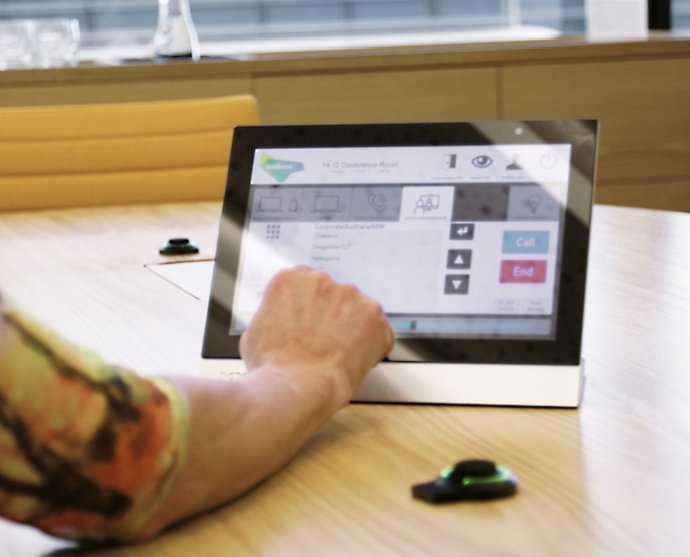 That is coming directly from the end user. It’s not often a conversation that’s been triggered by the AV integrator or even the AV consultant. It tends to be coming from the IT professional and the owner and administrator of the environment.
That is coming directly from the end user. It’s not often a conversation that’s been triggered by the AV integrator or even the AV consultant. It tends to be coming from the IT professional and the owner and administrator of the environment.
These customers manage, maintain, and spend a lot of money to guarantee up-time for what is a ubiquitous data network. Almost every single network is carrying Skype, Zoom, Jabber, or some other form of critical video. Higher resolutions generate challenges, but compression technology has come ahead in leaps and bounds, to the point where video can effectively coexist on enterprise networks.
User Engagement
From the control perspective, it’s the same logic that is behind Office 365, Skype, Zoom, and other productivity tools. They are becoming much more software-based and, therefore, by definition, centralised or cloud-based rather than localised within a room or on a desktop. So again, the end users are questioning, “Why do I need this special black control box in every room? Surely I could have software that controls all of my devices and business functions?” If they are all some form of cloud-based server, and a UI delivered by a browser or personal device, why can’t we do the same with AV?
The customer used to simply say, “I need some of that magic AV stuff.” Now we’re seeing a lot more engagement from end users saying, “No, I want to do AV this way.” The really cool thing from the industry’s perspective is that’s because AV is becoming a business-critical service for more and more of our customers.
Scaling Up
That means we have to think differently. We have to be much more attuned to delivering on scale, and delivering highly consistent user experiences. The opportunity for scale is huge. Our customers are saying, “I don’t want to do this the old way, I want to do this the new way” purely so they can do more of it.
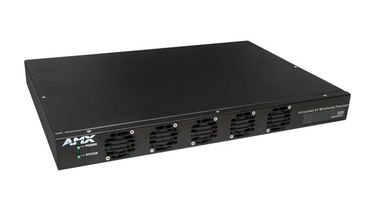
AMX NMX-WP-N2410 Windowing Processor
The demand is enormous; it’s in everything from the university environment, where we’re seeing massive explosions in the requirements for everything from collaborative huddles, to small teaching spaces, through to complex teaching spaces.
Then, in the corporate environment, they’re building floors in buildings with nearly as many meeting rooms as there are people. That demand is really fuelling the excitement and the interest for these new platforms.
Software defined control and video and audio over IP go together. Some of the first Utelogy deployments leveraged SVSI for video transport. One of the big attractors for Utelogy to SVSI was that it was network-based, as they were, and it was all open API, so it was very easy to integrate with their hardware-agnostic solution.
They’ve grown up together; Utelogy has been delivering solutions for over eight years. SVSI is up to its fourth generation platform, developed over 10 years.
Iterative Adoption
What we’ve seen with both SVSI and Utelogy is end users adopting it iteratively. For example, at Queensland University of Technology, we developed an SVSI overlay for their existing standard system to roll out into new or refreshed rooms. It uses a standard AMX presentation system, with an AMX touch panel, but instead of using HDBaseT, audio cabling or even speaker cabling to a great extent, we were able to leverage SVSI to deliver all of the audio, video, and control over the network.
The user experience is identical in both the new and legacy fitouts. The users don’t know the difference between a traditional room and an SVSI room, but, from a deployment perspective, they’re able to say at the design stage “I need data and power here, here, and here” and depending what kind of use the space is put to, install the technology as needed.
One of the key features about Utelogy is that it is hardware-agnostic, so it’s not designed around a particular hardware platform, which means it can reside over the top of existing infrastructure.
For example, in a university with a large fleet of existing, traditional AV control systems (AMX, Crestron or Extron) and a hundred little spaces where they just want basic control, we can look at Utelogy sitting over the top of all of that, providing for the simple stand-alone systems, but also utilising Utelogy to control and manage the more complex spaces. This extends the life of all of their hardware.
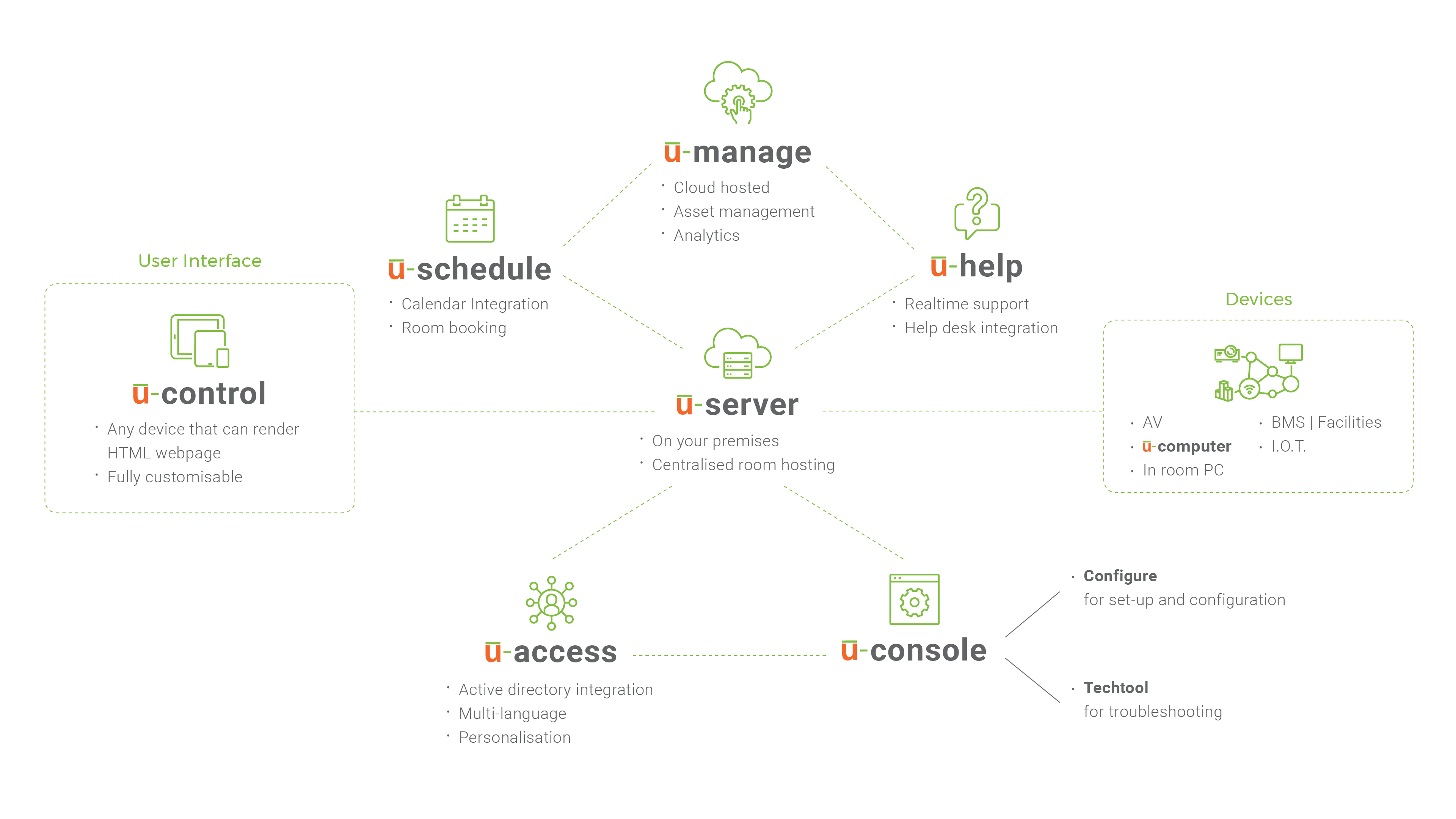
Market Drivers
The big driver that we’re seeing in software defined control is cost reduction per classroom. Every single university is chasing cost reduction because of the need to scale. The other driver, and this is true for both corporate and education, is the explosion of small, simple spaces.
In the corporate world, it’s huddle spaces with a display, a couple of inputs, and a little switcher. The display is a couple of grand, and the little switchers are very economical, so when you say a control system to simplify operation is going to cost between $5,000 and $6,000, it’s a real challenge.
In the education sector there’s a mass migration of what were faculty-owned teaching spaces transitioning across to management by the central AV teams. They’re looking at these hundreds of new spaces and realising they can’t get the budget to put a $5,000 or $10,000 control system in each of them.
That’s where Utelogy and SVSI are really changing the game because they’re giving AV the ability to deliver economical solutions across this huge explosion of smaller, and therefore very cost-conscious, teaching and meeting spaces.
This article first appeared in the September 2018 edition of CX Magazine – in print and online. CX Magazine is Australia and New Zealand’s only publication dedicated to entertainment technology news and issues. Read all editions for free or search our archive www.cxnetwork.com.au
© CX Media
Subscribe
Published monthly since 1991, our famous AV industry magazine is free for download or pay for print. Subscribers also receive CX News, our free weekly email with the latest industry news and jobs.




